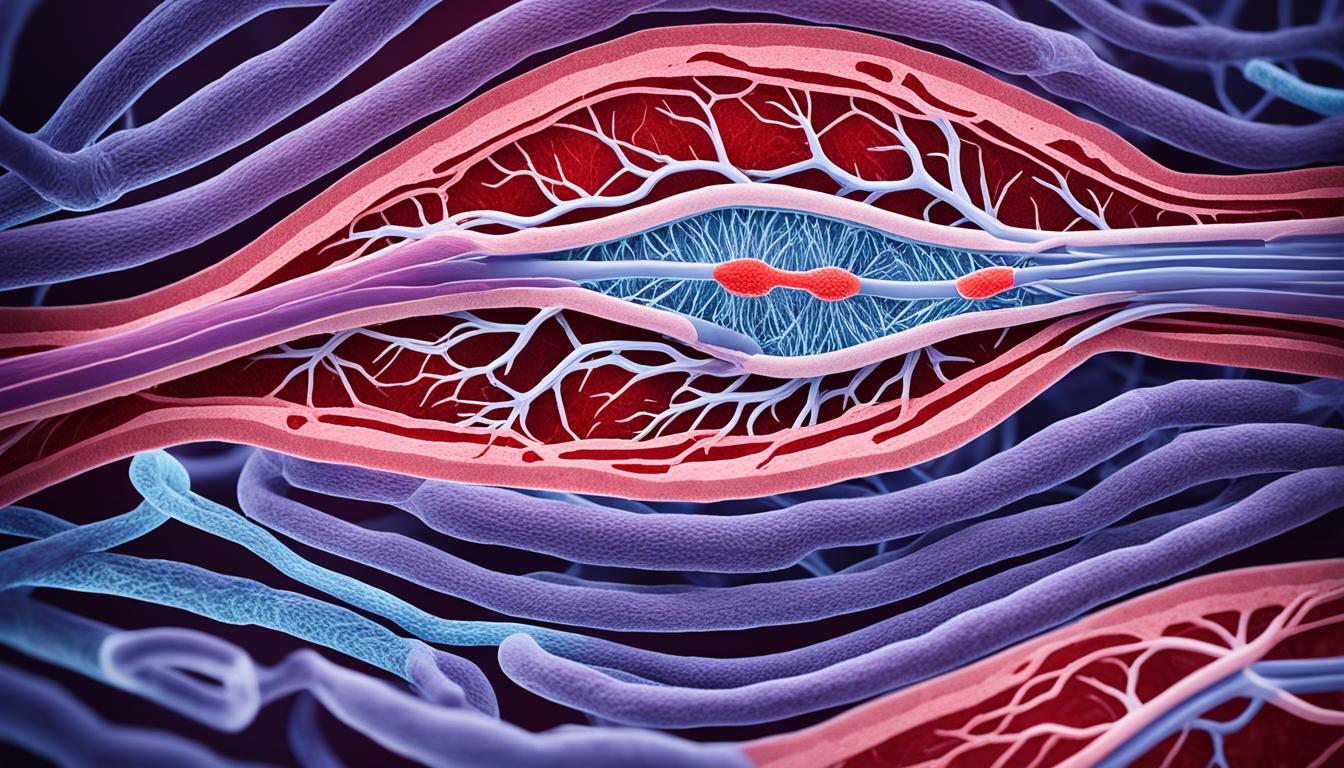Peripheral vascular disease (PVD) affects the arteries and veins in your arms, legs, and other areas. This condition restricts blood flow. Atherosclerosis, where arteries develop plaque, is a common cause.
Smoking, diabetes, high blood pressure, and high cholesterol raise the PVD risk. They lead to blockages and circulation issues in your vessels.
People with PVD feel leg pain and cramps, especially when moving. This is called intermittent claudication. The pain goes away with rest but can get worse over time.
To diagnose PVD, doctors look at your history, do checks, and use different tests. This includes measuring your ABI, and using ultrasound and imaging tests.
Modifying risk factors is a key part of treating PVD. Quitting smoking, watching your diet, and exercising helps. Medicines to improve blood flow and prevent clotting are also used.
Sometimes, surgery like angioplasty is needed to open blocked arteries. Or, bypass surgery might be done to create new paths for blood to flow.
Stem cell therapy is a new treatment option for PVD. It uses stem cells to repair tissues and grow new blood vessels. But, this area of treatment still needs more study.
Key Takeaways:
- Peripheral vascular disease (PVD) narrows and clogs arteries and veins.
- Plaque build-up from atherosclerosis is a main reason for PVD.
- Causes of PVD include smoking and health conditions like diabetes.
- It shows up as leg pain and cramps called intermittent claudication.
- Options for treating PVD are changing habits, medicines, and surgery.
- Stem cell therapy for PVD is promising but needs more study.
Risk Factor Modification and Treatment Options for Peripheral Vascular Disease
Aggressive risk factor modification is key in managing Peripheral Vascular Disease (PVD) and preventing cardiovascular issues. Addressing critical risk factors significantly lowers the chance of PVD and its side effects.
Risk Factor Modification
Strategies to control PVD risk factors include:
- Smoking cessation: Stopping smoking is crucial because it’s a significant risk factor for PVD.
- Control of diabetes, dyslipidemia, and hypertension: Managing these conditions is vital as they are linked to PVD. This includes using medication and making lifestyle changes.
- Dietary changes: Eating a diet low in saturated fats and high in fruits, vegetables, and whole grains can lower the risk of atherosclerosis and boost heart health.
- Regular exercise: Participating in exercise programs can enhance heart and vascular health and increase how far PVD patients can walk without symptoms.
Treatment Options
Various treatments are available for PVD based on its severity:
- Antiplatelet drugs: Doctors might prescribe aspirin to lessen the risk of heart and limb issues in PVD patients.
- ACE inhibitors and angiotensin II receptor blockers (ARBs): These medications help in PVD by improving artery function and vasodilation.
- Vascular surgery: In serious PVD cases, surgeries like angioplasty might be needed to unblock or bypass arteries and restore blood flow.
- Statins: These drugs lower cholesterol and can reduce heart risks in PVD patients with atherosclerosis.
Each treatment is designed for the patient’s unique situation, showing how personalized care is important in PVD management.
Using a mix of risk control, medicines, lifestyle adjustments, and surgeries if needed, can lead to a healthier life for PVD patients. This approach minimizes PVD’s effects on the body.
Investigational Therapies for Peripheral Vascular Disease – Stem Cell Therapy and Gene Therapy
Right now, doctors are looking into using stem cell therapy for treating Peripheral Vascular Disease (PVD). They are focusing on using bone marrow stem cells. In clinical tests, these cells are being added to the legs of patients with serious conditions.
The tests have shown some good early signs. But not all studies agree on the benefits. Some didn’t show a clear advantage.
Along with stem cells, scientists are also checking out gene therapy for PVD. They are specifically looking at VEGF gene therapy. The goal is to help grow new blood vessels and boost circulation in patients.
There have been many clinical trials on this type of therapy. Some are positive, while others haven’t seen big improvements.
The hope for treating PVD lies in these new areas of study. Stem cells and genes could change how we fight this disease. But we need more information to see if they are truly safe and effective.
As researchers gather more data, we’ll learn the real advantages and risks. This will help us make better treatments for PVD. It gives hope to those with little treatment options.

